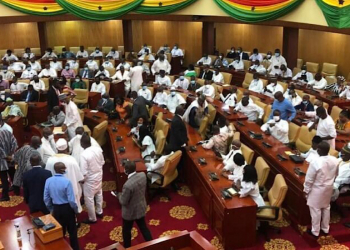All Nation University’s giant steps towards putting Ghana in the ‘League of Nations’ exploring space technology will attract global attention on Saturday as the country’s first satellite, GhanaSat 1, developed by Ghanaian students is set to be launched into space.
The satellite will first be launched to the International Space Station by Space X CRS-11 Cargo Mission and later deployed by a Japanese astronaut aboard the International Space Station.
The satellite was handed over to the Japan Aerospace Exploration Agency (JAXA).
This was after the satellite had gone through a rigorous safety review and flight fittest in February this year.
JAXA took delivery of the Cubesat, dubbed Ghanasat-1, on February 9, 2017 and handed it over to the National Aeronautics and Space Administration (NASA) in Florida, USA on February 13.
The deployment of GhanaSat1 will be watched live at JAXA Tsukuba Space Centre in Japan by top government officials and ministers.
The successful launch of the Cubesat, which weighs 1,000 grams, is expected to make the dream of Ghana becoming a space-faring nation a reality and also boost the country’s capacity to take advantage of space science technology in the future.
Images of the event will be beamed live at the ANU campus in Koforidua.
The Cubesat, described as the first university satellite in sub-Saharan Africa, has low and high resolution cameras on board to take pictures of our homeland and provide data that can be used to monitor the coastal areas of Ghana.
It also has Digi-Singer SNG mission from which the national anthem and other independence songs can be broadcast from space, as well as collect requested songs from the ground and send to the satellite to broadcast in space.
It is an initiative aimed at stimulating interest in Science, Technology, Engineering and Mathematics (STEM) education in high schools and tertiary institutions.
It will also embark on a scientific mission to investigate the radiation effects on commercial-off-the-shelf microprocessors. This means it will measure the single event latch-up occurrence that degrades electronic system on board satellites due to the harsh space environment and analyse this data to contribute to scientific research.
The two-year project, made possible through collaboration between the ANUC and the Kyutech Institute of Technology (Kyutech) in Japan, began in October 2015, was completed in December 2016.
It was carried out entirely by three young engineering graduates of the ANUC who designed, assembled and tested the satellite when they joined the Birds project implemented by Kyutech for other four nations aspiring to be space-faring.
The trio, led by Benjamin Bonsu, a PhD student in Applied Science for System Engineering, Joseph Quansah and Ernest Teye Matey, executed the project under the supervision of Professor Mengu Cho, the Director of Laboratory of Spacecraft Environment Interaction Engineering (LaSEINE) and other faculty members of Kyutech.
The young engineers and their team in Ghana were the founder members of ANUC’s Space Science and Technology Laboratory (SSTL) which designed, developed and launched successfully the university’s miniaturised Cansat on May 15, 2013, an initiative that attracted the attention of both local and international media.
The trio completed their Bachelor of Science degree in Electronics and Communications Engineering at ANUC in 2013 and constructed the university’s amateur Ground Station that currently allows the station to receive information from passing satellites.
It is an achievement that has made ANUC the first university in Ghana and sub-Saharan Africa to accomplish such a feat in space science technology applications.
The effort contributed to make the university the only local institution to be given the licence as amateur licence operators by the National Communication Authority (NCA) in 2014.
Throwing light on the project, the President of the ANUC, Dr Samuel H. Donkor, said one of the most important technologies that could advance the development of any nation was space science exploration.
“When ANUC realised that space science was something that could help move Ghana’s development forward we decided to invest over $500,000 in research in this area, starting with the development and successful launch of our Cansat in May 2013 and building a ground station a year later.
“As part of our commitment, we sponsored three young graduates to further their studies in space science technology and satellite development when they joined the Birds project that offered them the opportunity to design and build the Ghanasat-1 in two years,” Dr Donkor said.
Meanwhile, President Nana Addo Dankwa Akufo-Addo has redirected Ghana’s mission in Japan to represent the country at the event to be beamed live via video feed from the International Space Station at Tsukuba Space Centre in Japan.
The Office of the President in a correspondent with the ANU asked to be able to communicate with the three Ghanaian students–Mr Benjamin Bonsu, Mr Ernest Matey and Mr Joseph Quansah, during the release of the satellite.
“ Such an interactions we believe will help to add much gravitas to the event and serve to convey to your students engineers our immense national pride and esteem in which they are held,” the letter from the Presidency signed by the Secretary to the President, Nana Bediatuo Asante, stated.
Join GhanaStar.com to receive daily email alerts of breaking news in Ghana. GhanaStar.com is your source for all Ghana News. Get the latest Ghana news, breaking news, sports, politics, entertainment and more about Ghana, Africa and beyond.
(Via: CitiFM Online Ghana)




